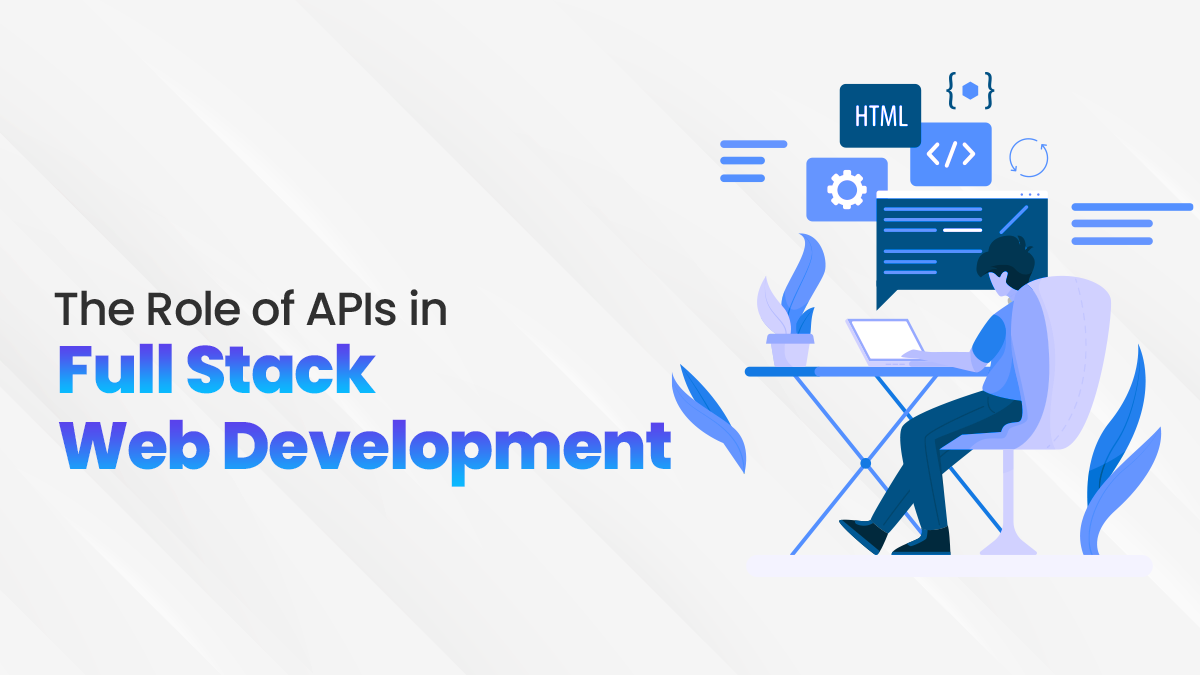In the modern world of web development, it’s no longer just about creating an advanced front-end or back-end application. A full-stack web developer is proficient in handling both front-end and back-end applications. This combination of skills is essential in today’s fast-paced digital environment. Application programming interfaces are among the most critical tools in full stack web development, as they are predominantly what makes these applications dynamic and efficient.
In this blog, we will explore APIs and their role in full stack web development. We will examine how APIs cross boundaries between individual application parts and explain why a company developing a full stack or a web developer should value knowing APIs during project implementation.
What Is An API?
Let’s begin with the fundamentals before delving into the specifics. An API is just a collection of rules and procedures that enable one software component to communicate with another. Just like you have a menu at a restaurant, you order from it, and the kitchen system is what prepares your dishes. You don’t have to be able to cook or know what is going on in the kitchen; you simply have to understand how to request it, and the kitchen takes care of it.
APIs act as bridges in full-stack web development, which enables the exchange of data or information between a particular application that has two different parts called the frontend and the backend. Thus, they may help fetch information from the server, send the data to the server, and authenticate other functions like paying.
Why Are APIs Crucial for Full Stack Web Development?
1. Seamless integration between the frontend and backend
With full-stack web development, it becomes possible to achieve a harmonious and workable application that results from frontend and backend cooperation. APIs allow two halves of an application to communicate through a standard interface. Whether an e-commerce website, a social media platform, or a data-driven app is built, it enables the front end to retrieve the data from the backend and, accordingly, reflect that data on the user in real-time.
A full stack web developer can use an API to fetch data from the database (back-end) and display it on a webpage (front-end), such as the user’s details, product lists, or dynamic content.
2. Reusability and scalability
It eases the task of scaling full stack web development applications. Here, instead of building every feature from scratch, developers can just reuse APIs, integrate third-party services, or leverage existing functionalities. This ensures that developers do not have to build unique parts of the application but rely on trusted external APIs to handle the most common tasks.
For example, payment gateway integration into an application may not be in the form of building complete payment systems because one can integrate a service like PayPal or Stripe and let it handle transactions as it offers an API.
3. Faster Development Time
APIs are very helpful in reducing development time, as a full-stack web development company or individual full-stack web developers can build and deploy with much more speed using existing APIs. Instead of developing a feature in-house, a developer may use third-party APIs for login with Google and Facebook, geolocation, email, etc.
Developers don’t have to maintain these services since the API provider does. This gives them a chance to work on other key features of the application, speeding up efficiency in general.
4. Third Party Integration
The integration of third-party services is one of the most significant benefits that APIs have for full stack web development. It’s impossible to imagine the creation of any application today, considering how techie this world is, and not make use of third-party services in an application, including functionalities like maps, social media sharing, analytics, etc.
For example, if you are ready to add location-based features to your application, you don’t need to develop the mapping system from scratch. You can use APIs from such services as Google Maps to easily add such features to your app. Similarly, APIs can help you integrate other services like email notifications, cloud storage, and customer support systems.
5. Mobile app development
In addition to web application development, APIs also play a significant role in mobile app development. The scope of the full-stack development service usually extends to mobile platforms. Mobile applications often use the API to retrieve data from the backend servers, just as web applications do.
For example, if a mobile application requires user profile data, the app asks the server using an API call and the information is then transmitted back to display on the client. This has the added effect of making it possible for a web and its mobile version both to be updated in tandem using the same set of backend services.
6. Enhanced Security
Security is always one of the considerations in full-stack web development. APIs aid in the overall strengthening of the security of a web application in transferring data securely from the front end to the back end. Authentic and good design of an API usually involves authentications and authorization. For instance, OAuth, which is often paired with JWTs, ensures that only authorized individuals get access to data.
For instance, for payment processing APIs or login integration, you are supposed to secure the communication channel between the client and the server. Secure APIs decrease the threat of data leakage and unauthorized access; therefore, they ensure users’ sensitive information is safe.
7. Microservices Architecture
Modern full stack web development focuses on building applications around microservices architecture. This architecture breaks an application into smaller, independent services that can be developed, deployed, and maintained separately. APIs form the backbone of this architecture, enabling the different microservices that constitute an application to communicate with one another.
In using the APIs in this manner, scaling parts of the application independently becomes easier. For instance, when one part of the system receives heavy traffic, the microservice associated with it can be scaled up, not affecting other applications within the system.
Conclusion
APIs have become an integral part of full stack web development. That is, such APIs allow developers to build applications that are efficient, scalable, and feature a large number of attributes. Whether you work as a full stack web developer or a member of a full stack web development company, knowledge of the role of APIs is fundamental in creating a seamless, dynamic application with user needs and business requirements.
By using APIs, developers can focus their efforts on innovating new functionalities while the common functionalities are outsourced to third-party services. This significantly reduces development time, improves security features, and ensures that such applications can scale.


